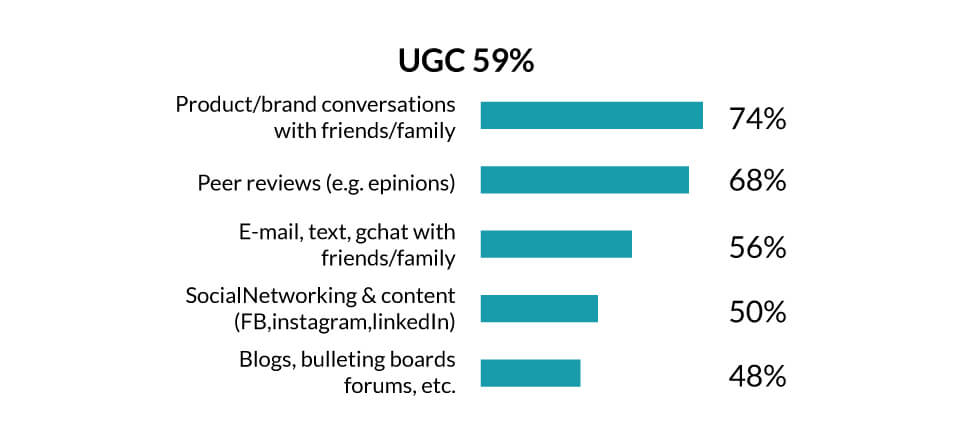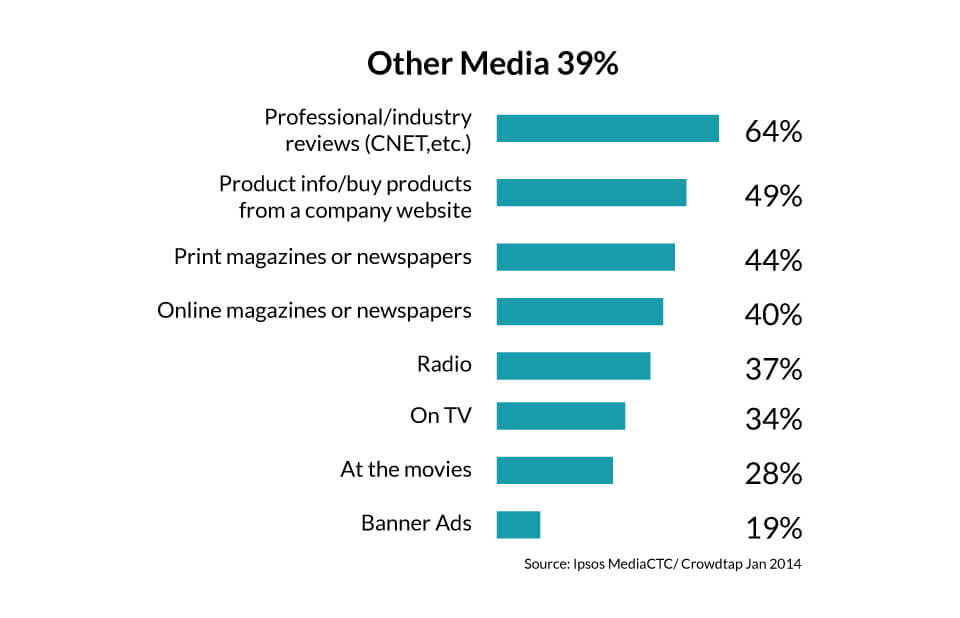For brands trying to reach, connect with and win highly sought after audiences, user-generated content is a highly successful tool that can no longer be ignored. Not only are major brands and businesses implementing UGC strategies, but consumers are engaging and evaluating companies by what their peers are saying, doing, buying and sharing. Buffer blogger Brian Peters found forty-three percent of people are more likely to purchase a new product when they have learned about it through social channels or from friends and family. The importance of user-generated content on the customer life cycle is significant.
What is User Generated Content (UGC)?
In a paper published by the Interactive Advertising Bureau, it is defined “UGC is content that is generated by individual users or peers that has the potential to create engagement and/or drive conversation.”
Simply put, user-generated content is media created by users, or consumers, of a product or brand. This content comes in many formats, but the primary ones are:
- User Generated Blogs
- Ratings and Reviews
- Social Media comments and posts
- User Generated Videos
- User Generated Images
- Forums
- Podcasts
Why is User-Generated Content Important?
Although user-generated content isn’t a new concept, the proliferation of platforms like Facebook, Instagram, Snapchat and YouTube have bolstered the conversations between brands and consumers to an even level.
Consumers are now publishers, critiques and active participants in the digital dialogue around brands. In her article, “How User-Generated Content Can Transform Your Company’s Storytelling,” Tereza Litsa reported roughly 80 percent of online content is generated by users, leading to democratized storytelling.
As the Millennial segment matures, we can see how important UGC is moving forward, and establishing a relationship with the largest population of the labor force and those who now control more spending power than any other generation.
In a collaborative study between the Social Media Advertising Consortium, Ipsos and CrowdTap, “Social Influence: Marketing’s New Frontier,” the companies found millennials spend 30 percent of their media time with curated content created by their peers. The same study also cites UGC to be trusted 40 percent more than information received though traditional media. Not incorporating UGC into your content marketing strategy will leave you behind your competition in creating meaningful, two-way conversations with your target audience.

We, as humans, are predisposed to be impacted by the comments, shares, posts and review of our peers. There is a psychological principal, called social proof, that explains the driving forces behind user-generated content and why consumers engage. User-generated content is word of mouth advertising reborn in a digital age.
In other words, when people see other people doing something, buying something, sharing something or reviewing something around them, they are influenced in a positive way. According to TechCrunch’s article “Social Proof is the New Marketing” there are five types of social proof:
- Expert
- Celebrity
- User
- Wisdom of the crowds
- Wisdom of your friends.
How to Include User Generated Content in your Marketing Strategy

There are key learnings and understandings a brand needs to be able to properly implement a user-generated content strategy.
First is understanding who your target audience is and where they spend their time. The keystone of UGC is getting the right message in front of the right audience, where they already are, at the right time. Messaging, tone, engagement tactics and media differ by platform, and so must the strategy to drive user-generated content.
With the target audience personas and their preferred channels identified, now the good content must be found, curated and shared. Two of the primary methods of gathering user-generated content rely on both the collection of existing content and active participation to engage influencers of the brand, encourage engagement from social communities to generate new content. Actively searching and collecting from social media sites, online communities, forums and blog comments of content is a great place to start collecting, but also to better understand what your existing customers are saying about the business or products. Posts, pictures, videos, reviews, comments and success stories can all make for great content to share your brand story.
Engagement mechanisms, such as hosting contests, sweepstakes and branded hashtags, allow brands to create aggregated content that will appeal to the target personas and give them the opportunity to have an engaging conversation.
As a brand executes a user-generated content strategy, some of the key benefits of the benefits as identified by the IAB are:
- Heightened consumer trust
- Stronger brand affinity and engagement
- More earned media
- Stronger SEO
- New research opportunities
- Cost-efficient content pipeline
Ongoing measurement, content refinement and active participation with user-generated content can lead to identifying values of your customers, key influencers and creating value-driven relationships with your target audience.